

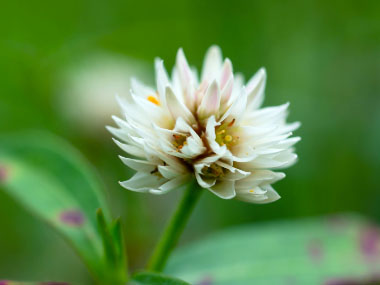
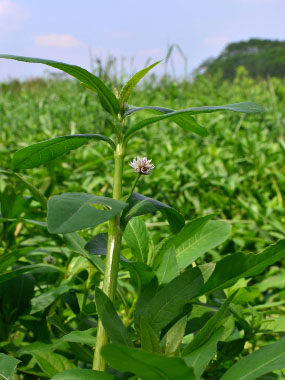
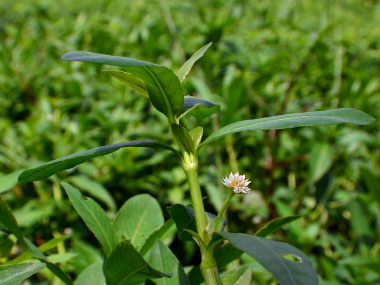
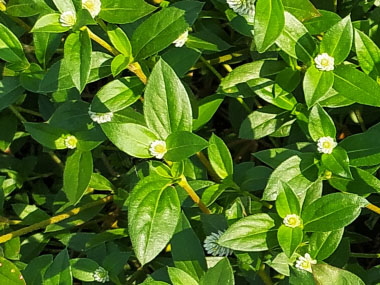
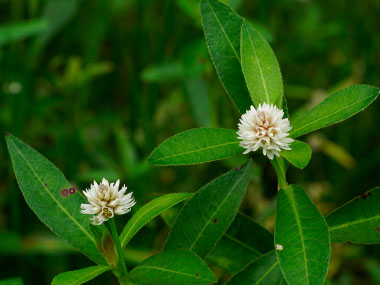
To support our efforts please browse our store (books with health benefits, etc.).
Alligator weed is in the Amaranthaceae family. It is native to South America, principally the Parana River region, from Guyana to Brazil and northern Argentina. It has been introduced into Europe, North and Central America, the Caribbean, tropical Asia, and Oceania. This is an aquatic perennial that is an invasive species.
Distinguishing Features
Alligator weed is commonly found spread across the surface of a body of water in a sprawling fashion. The stems are pink and hollow.
Flowers
Individual flowers are papery, small, clover-like, spiked flowers that occur at the terminal ends of stems. They are typically white or pale pink. Each flower has 5 stamens and 5 sepals.
 Fields
of Nutrition has medicinal benefits and vitamin/mineral content of Alligator Weed.
Fields
of Nutrition has medicinal benefits and vitamin/mineral content of Alligator Weed.
Leaves
Leaves grow opposite along the stem. They are lanceolate to ovate, measuring 2.5 to 5cm (1-2”) long. Pinnate venation, with prominent veins running from the base to the tip of each leaf. The leaf margin is entire. Leaves are usually green but can turn reddish or purplish under certain conditions.
Height
This is a sprawling plant, so it does not grow in height. Stems are pink and hollow and can reach lengths of 1 meter (3’). The stem is typically prostrate and can form dense mats on the water's surface. It can protrude up from the water's surface 10 to 20cm (4 to 8").
Habitat
Alligator weed can be found growing along rivers, swamps, lakes, and wetlands. It is rooted to the ground and emerges above the water surface. It can also be found in riparian habitats free-floating in dense mats on the water surface. It grows in still and flowing water.
Edible Parts
Aerial parts are edible but it must be cooked and preferably in small quantities. Newer growth is more tender than older growth. It is imperative that the water and mud in which alligator weed grows must be free of any harmful minerals or heavy metals as this plant gathers and concentrates these toxic compounds.
Other Name
Alligator Grass.
Similar Plants
Mukunuwenna, Wandering Trad.
Winter Survival Food Handbook

PDF Plant Magazines
Types of Wild Food
Geographic Zones Seasons
Disclaimer
EdibleWildFood.com is informational in nature. While we strive to be 100% accurate, it is solely up to the reader to ensure proper plant identification. Some wild plants are poisonous or can have serious adverse health effects.
We are not health professionals, medical doctors, nor are we nutritionists. It is up to the reader to verify nutritional information and health benefits with qualified professionals for all edible plants listed in this web site. Please click here for more information.
Why Edible Wild Food?
- Food costs are rising
- Free, wild food is readily abundant
- Wild food adds nutrition to your diet
- Wild food can help treat various medical conditions





